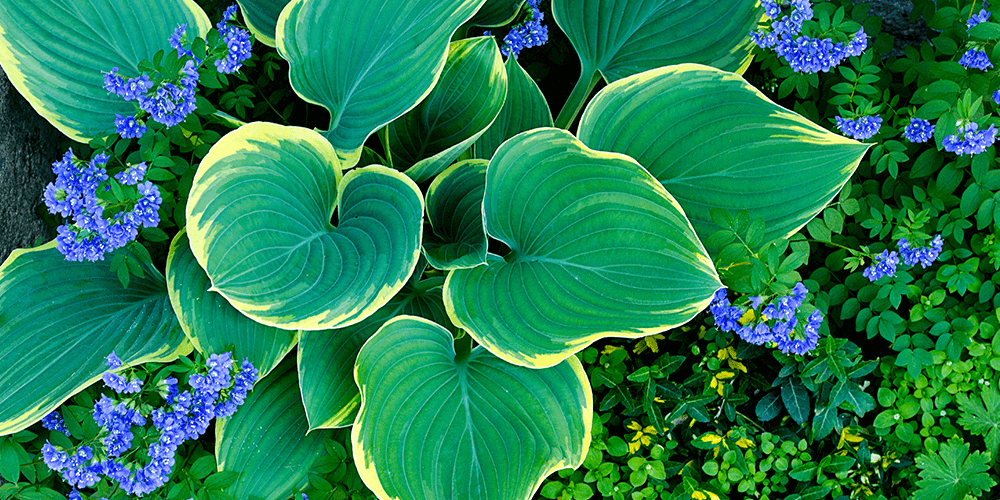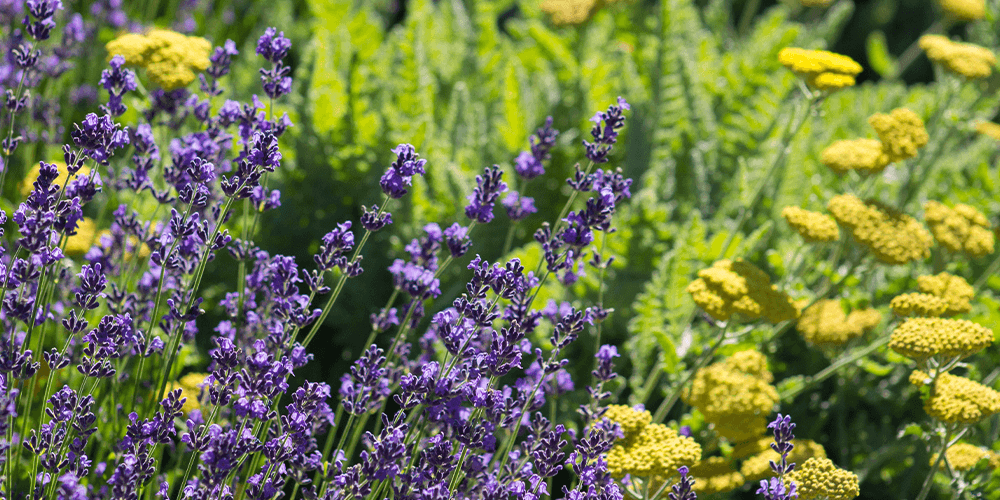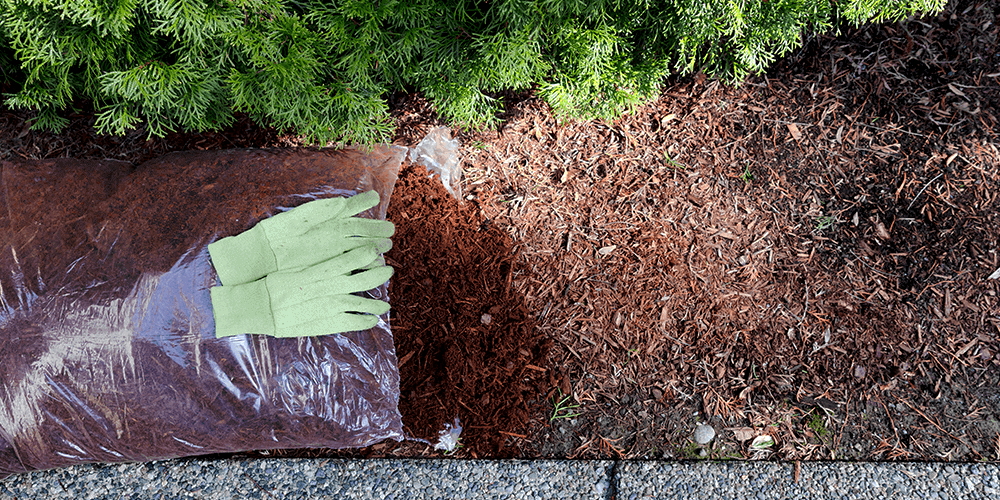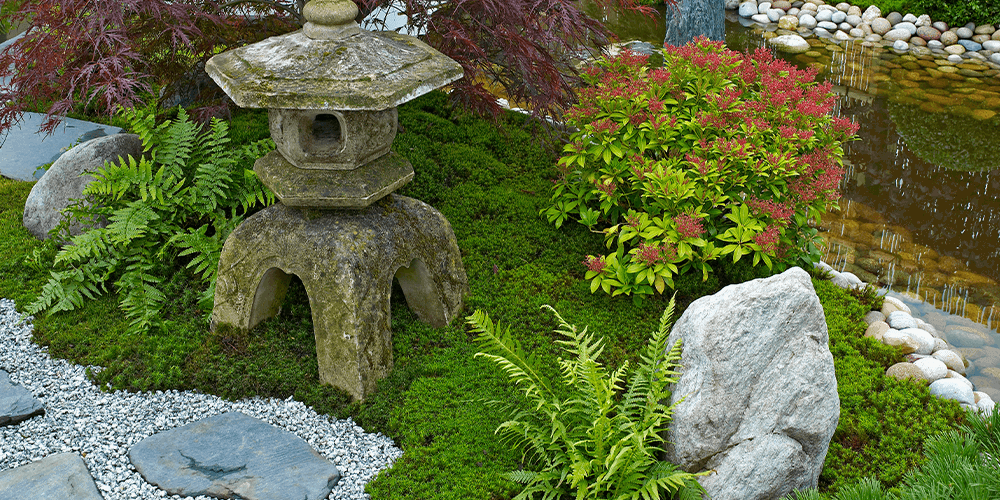Texture is a defining feature of any beautiful garden. From soft and airy to bold and impressive, a variety of textures gives your garden another dimension of feeling. You can achieve this by growing an assortment of plants or using different materials in your landscapes. Here are some ideas to get you started!
How to Create Texture with Plants
Usually, when we refer to texture, we’re talking about the sense of touch. For example, some surfaces feel rough, while others feel smooth. When we’re talking about a garden, texture comes from how the plant looks, including the plant’s shape, the type of leaves and flowers, and how light interacts with the foliage.
 Bold Texture
Bold Texture
Plants with big leaves or prominent flowers bring a bold look to the landscape. They stand out among the other plants and draw attention, like hostas, peonies, and blazing stars. Too many bold plants in one area compete for the spotlight and create a cluttered look. To balance out the bold plants in your landscape, nestle them among plants with other textures.
Coarse Texture
Some plants bring a coarse look into the garden. They stand out by their spiky flowers, stiff leaves, or bumpy, veiny, or rugged foliage. Comfrey, rhubarb, and globe thistles are all examples of uniquely coarse-textured plants. Mixing them among fine plants creates a pleasing contrast and sense of depth in your garden.
 Fine Texture
Fine Texture
Fine texture comes from any plant with a soft and airy look; this often includes plants with clusters of tiny flowers, like yarrow, or those with soft, light, and thin leaves, like lavender and fennel. Soft grasses that wave in the wind also bring fine texture into the garden.
Medium Texture
Some plants may not be noticeably coarse, fine, or have any bold features. If their texture doesn’t stand out, we can call them medium texture. Many plants fall into this category, but that doesn’t mean they’re not important in the garden. They’re necessary to balance the fine and coarse textures. Plus, they may have beautiful color, scent, or something else besides texture to offer your landscape.
Creating Texture with Mulch and Stonework
Just as plants are not the only part of your landscape, they also aren’t the only components that create texture. Anything visible impacts texture, including mulch and stonework in your garden.
 Texture with Bark Mulch
Texture with Bark Mulch
By the same token, smaller pieces of bark mulch also create a finer look than large pieces. Finely shredded wood or bark gives a softer and airier feel to a bed, whereas big nuggets of bark have a bolder and rougher look and many interesting colors, lines, and bumps.
Smooth and Coarse Rocks
Not surprisingly, rough, jagged rocks bring a coarse texture to the landscape. Crushed stones or volcanic rocks on a garden bed are good examples. They contrast the smooth look of river rock and pea gravel. If you look closely, you’ll also notice that smaller stones bring a finer look to the landscape than larger stones.
 Boulders and Other Focal Points
Boulders and Other Focal Points
Besides the mulch or stone you put on your beds, any boulders in the landscape or other focal points like wooden barrels, rustic benches, and art pieces also have certain textures. Once you start to notice the texture of an object, you have one more tool for creating beautiful visuals in your garden.
There are no hard and fast rules for interpreting texture. Once you start paying attention, maybe you’ll notice more nuanced categories than those above, or perhaps you will simplify them into coarse and fine categories. Whatever your approach, playing with texture in your landscape is a beautiful way to add depth, contrast, and vitality to your landscape.
For more gardening ideas, feel free to visit our garden center in Moultonborough, New Hampshire! Follow us on Facebook or Instagram for updates and featured products.


 Fine Texture
Fine Texture  Texture with Bark Mulch
Texture with Bark Mulch  Boulders and Other Focal Points
Boulders and Other Focal Points